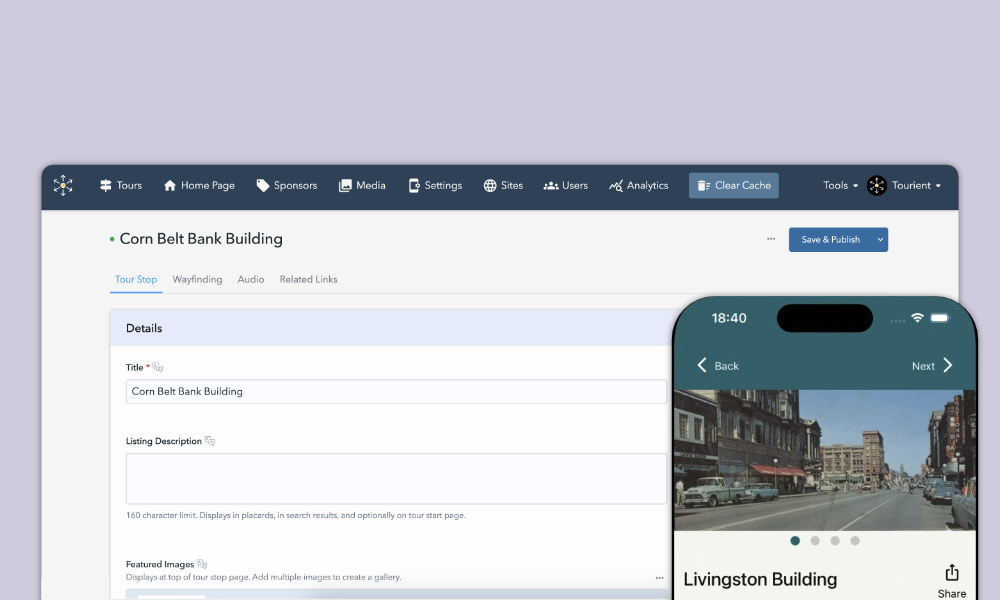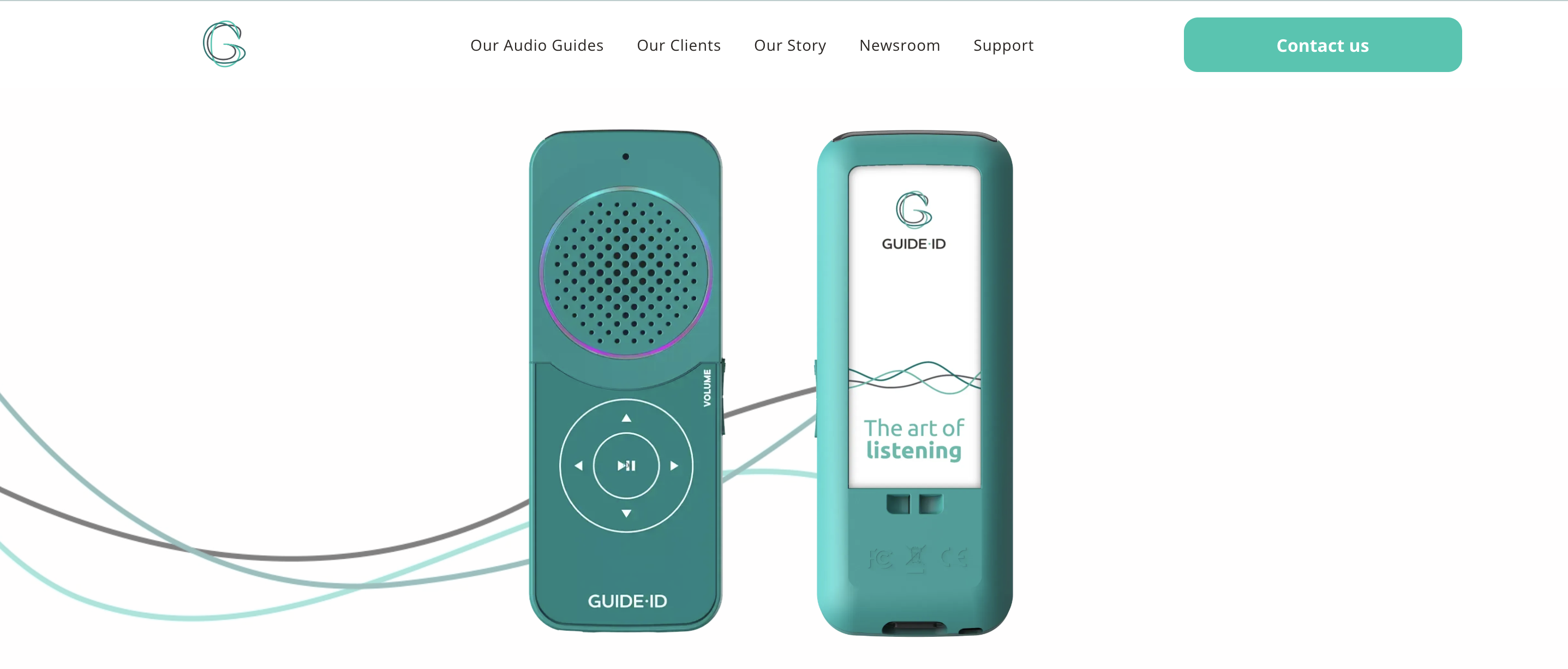Remember those audio guides you used to rent at museums? The ones with hard to use keypads, a whisper-quiet speaker you had to hold up to your ear, and sometimes a wrist strap? They're quickly becoming a thing of the past.
Smartphones have changed everything, and museum audio tours are no exception. Even before the pandemic, museums were switching from traditional audio guide equipment to mobile apps that work on visitors phones. And it makes sense: apps are more engaging, easier to use, and give you more for your money.
In this guide, we'll walk you through the three main ways museums can create self-guided audio tours today, from modern approaches to more traditional ones.
1. Museum Audio Tours on Visitor Phones
Museum visitors want the freedom to explore at their own pace, making self-guided tours that are available on a web app and accessible from any modern smartphone the go-to choice today. Many tour builder platforms exist. Some are designed specifically for the needs of museums, while others are more general-purpose. We recommend thoroughly evaluating your options to find one that fits into the matrix of your needs, wants, and budget.
Pros | Cons |
|---|---|
Create an audio tour app without needing a developer or coding knowledge. | Ongoing annual or monthly subscription cost starting around $2,500. |
Multimedia, immersive experiences that allow visitors the freedom to explore the museum in their own way. | WiFi required to view tours; locations with poor connectivity may benefit from platforms with offline mode. |
Use your audio guide to attract sponsors, local advertising, and sell memberships. | Marketing your tours is essential to attracting ads and sponsorships: if people aren't using your app, it's hard to convince someone to sponsor it. |
Required Software and Hardware
Unlike traditional audio tour equipment, with web-based apps, the hardware cost is offset entirely onto your visitors, who use the phones they already have. The software cost is relatively low, with annual plans for tour builder platforms starting around $2500 per year.
You will also need to design flyers and create QR codes to market the audio tour to your visitors.
Example Solution: Tourient

Tourient makes it simple to offer self-guided audio tours and mobile guides through your visitor’s phones and tablets.
As the leading platform for museums, it empowers you to offer unlimited tours with compelling storytelling through audio, text, image galleries, hotspots, before/after comparisons, quizzes, embeds, and more.
Tour Builder CMS designed for non-technical users to make adding and editing content easy
GPS-enabled maps, keypad entry, QR code scanning, and other wayfinding options
Marketing tools to generate QR codes, social media posts, exhibit labels, and flyers
Import tools to help you move from other platforms like STQRY and Nubart
WCAG-compliant accessibility features like high contrast mode, ALT Text, skip links, and ARIA labels
64 languages supported
Software updates and fixes at no extra cost
McLean County Museum of History uses Tourient for an award-winning Spanish-language narrative.
“We cannot truly tell the diverse stories of the people of McLean County if the stories themselves are inaccessible to the community. This audio tour is the great step towards making the museum’s content not just about everyone, but for everyone as well.” —Emily McCusker, Director of Youth and Family EducationRead case study
2. Museum Audio Tours on Museum Phones
This is more of an addon to the first option than an entirely separate solution. Some visitors don’t have their own phones (elderly or young kids, for instance), so having on-site devices for free use or rental can make sense if your budget allows.
Required Software and Hardware
A small fleet of phones and tablets is relatively inexpensive when purchasing refurbished units. Sometimes 501(c)(3) non-profits can even get them for free through tax-deductible corporate donations.
Since you’d be using WiFi, you wouldn’t need to worry about data plans. Mobile device management (MDM) software can help you lock down the devices to prevent misuse.
Example Solution
Pairing Tourient or another self guided tours platform with a mobile device management (MDM) solution like Google Workspace Device Management or Microsoft Intune gives you the best of both worlds—a robust, accessible, tours app that's available anywhere, anytime—and the peace of mind of having your own devices.
3. Traditional Audio Tour Equipment
Those clunky audio guides that used to be available at most museums are still an option, and may be the right one depending on your organization. If you don’t have WiFi, or are providing tours of something like a large naval ship where connectivity is poor, then this third option is for you.
Unlike app-based audio tours, the upfront cost of traditional equipment is high, and ongoing maintenance is a concern.
Pros | Cons |
|---|---|
Familiar to older visitors, who may prefer them. | High cost: Between $30,000 and $65,000 for mid-sized museums. |
Highly reliable in environments without WiFi. | Updating audio content is more difficult, and these types of tours lack the immersive experience of app-based guides. |
Distraction-free experience focused on your tour content. | Cleaning, maintenance, storage, and replacement of devices are an ongoing cost. |
Required Software and Hardware
There are few remaining vendors of traditional museum audio tour equipment. They tend to provide complete packages of hardware and software, which often include audio transmitters, handheld receivers, device chargers, and a means of updating the content.
Example Solution: Guide ID

Guide ID provides the Podcatcher Pro, a modern hand-held audio device with simple controls for a distraction-free experience. These systems can handle group tours or individual guides, with manual and automatic audio triggers. They’re ideal for sites without WiFi, or with a visitor base that lacks their own devices.
